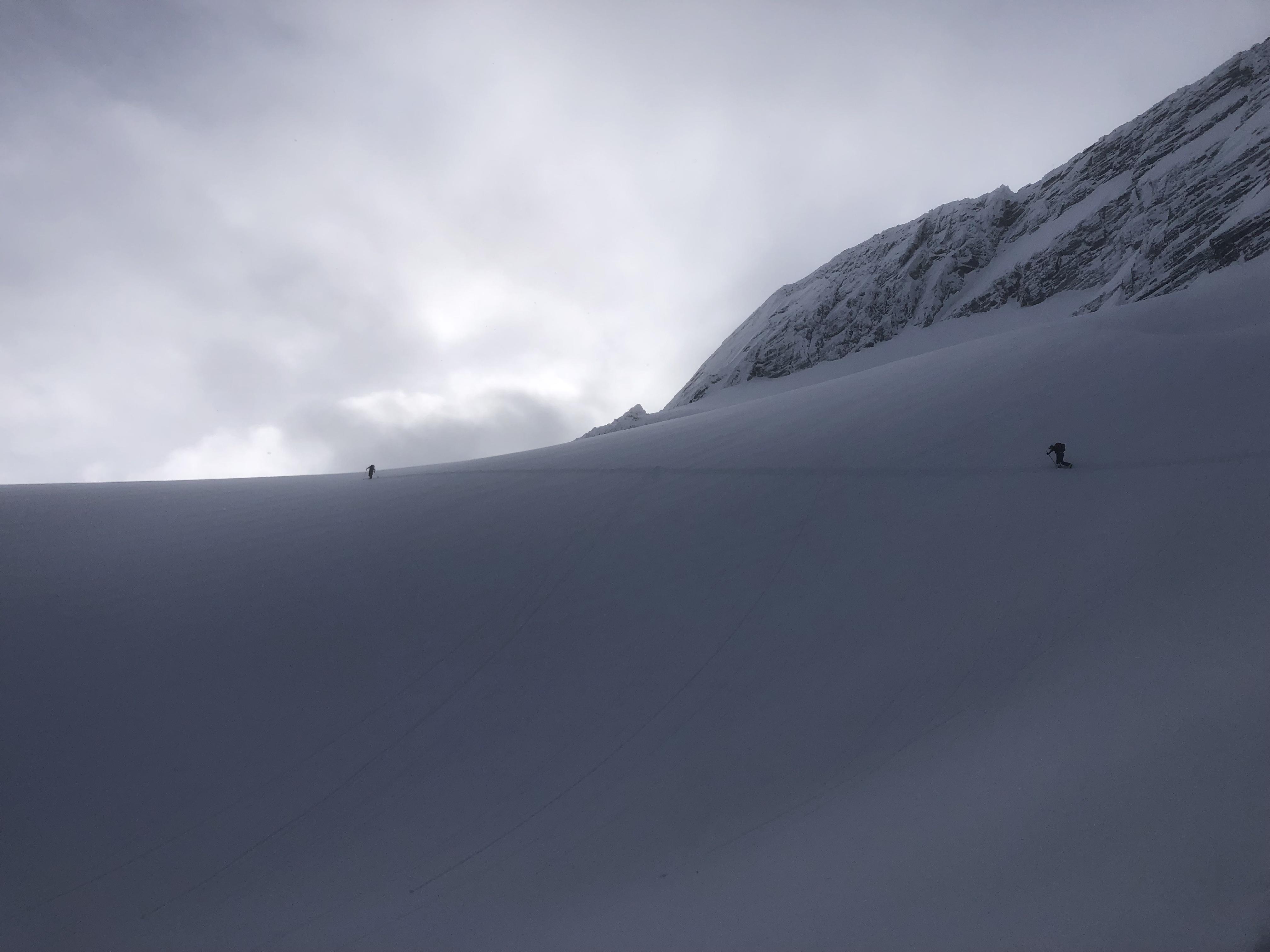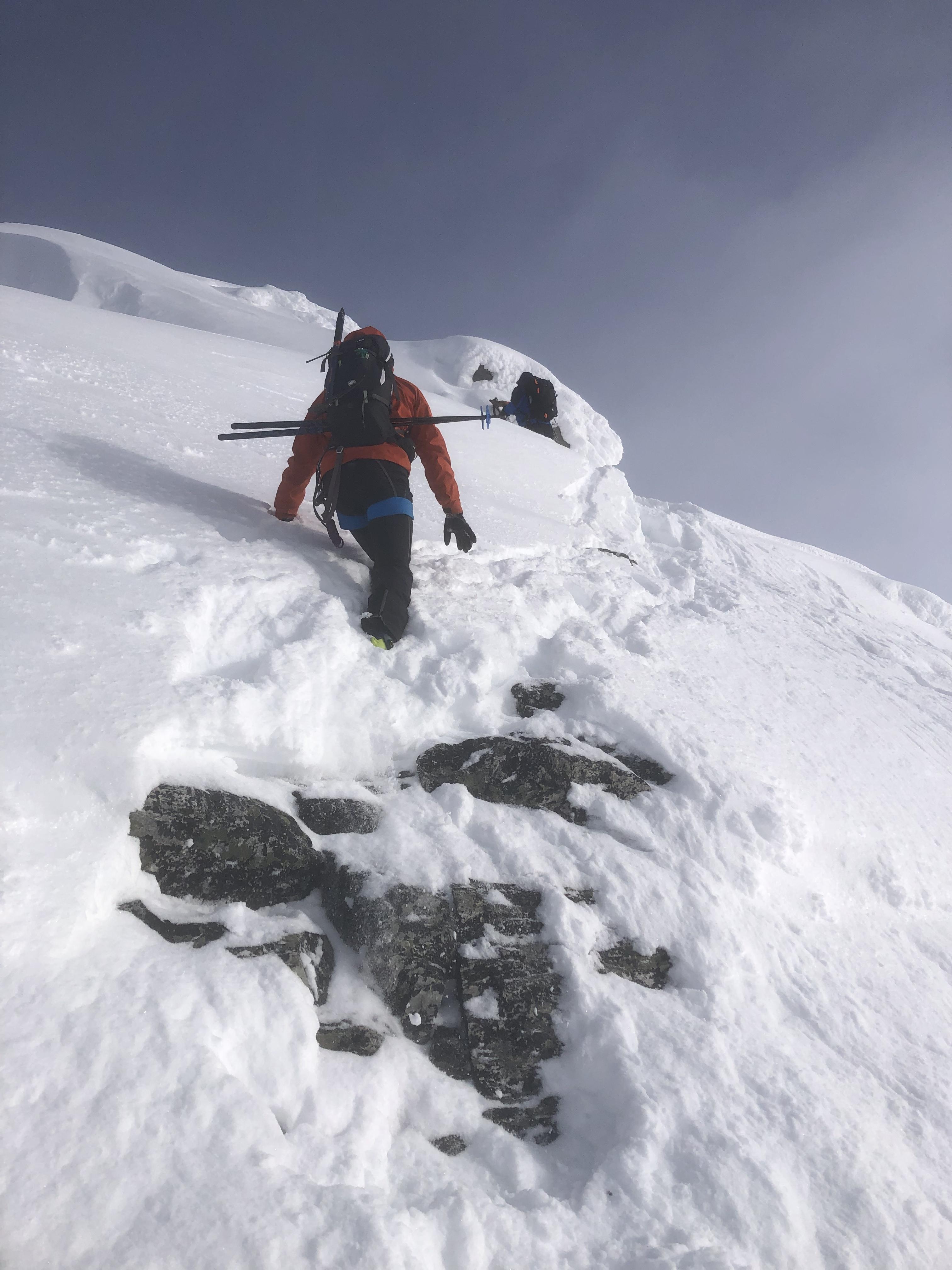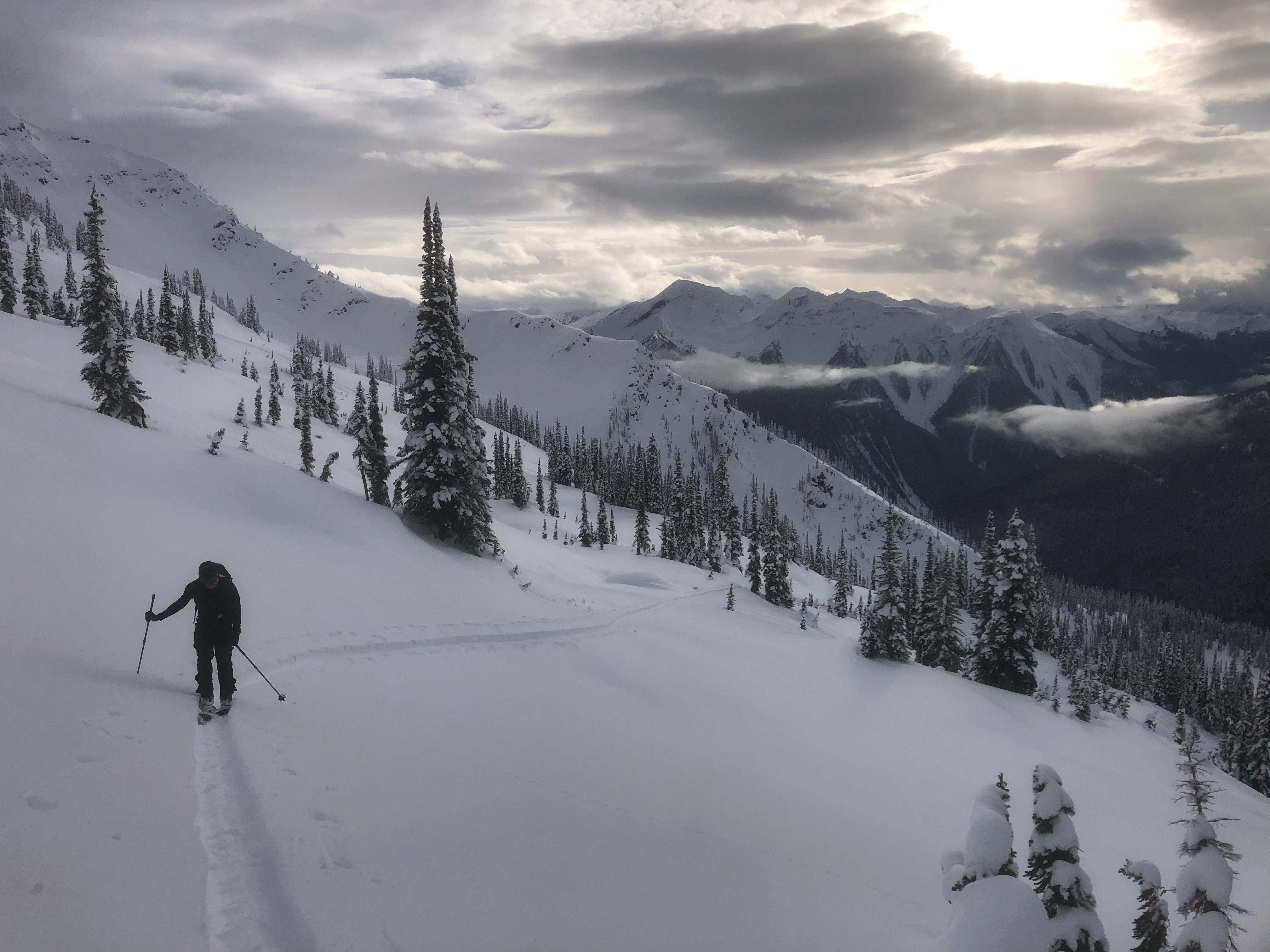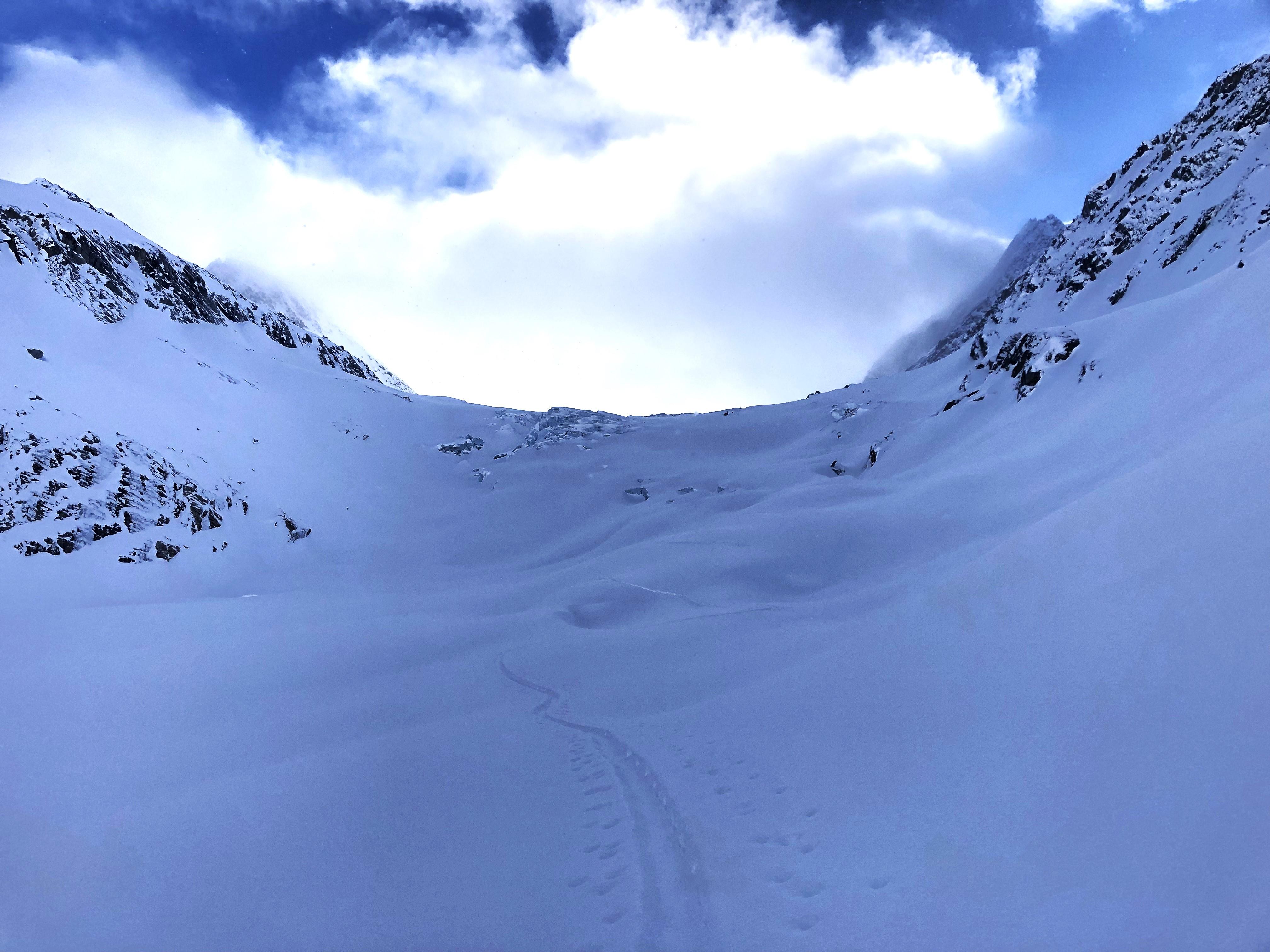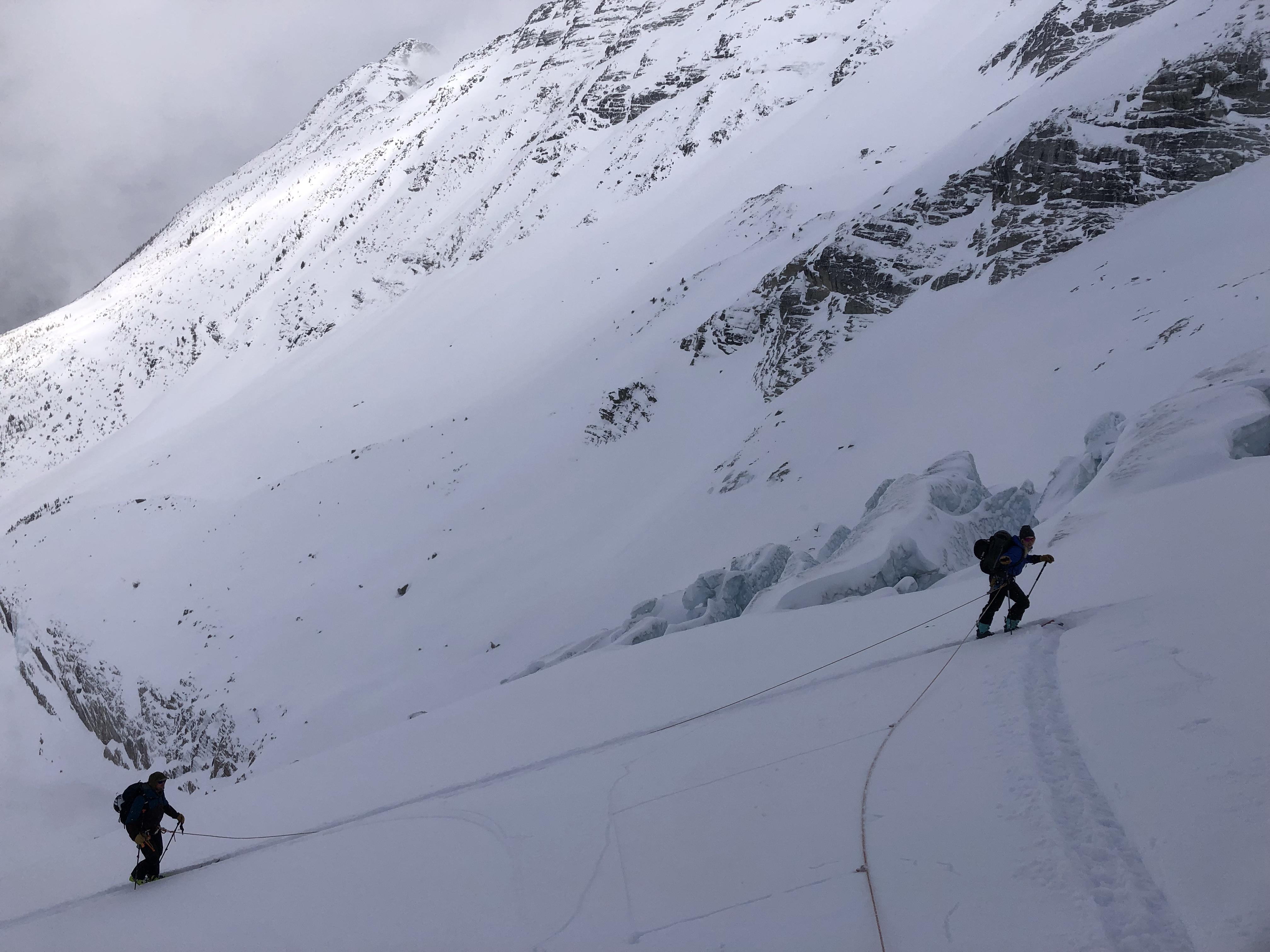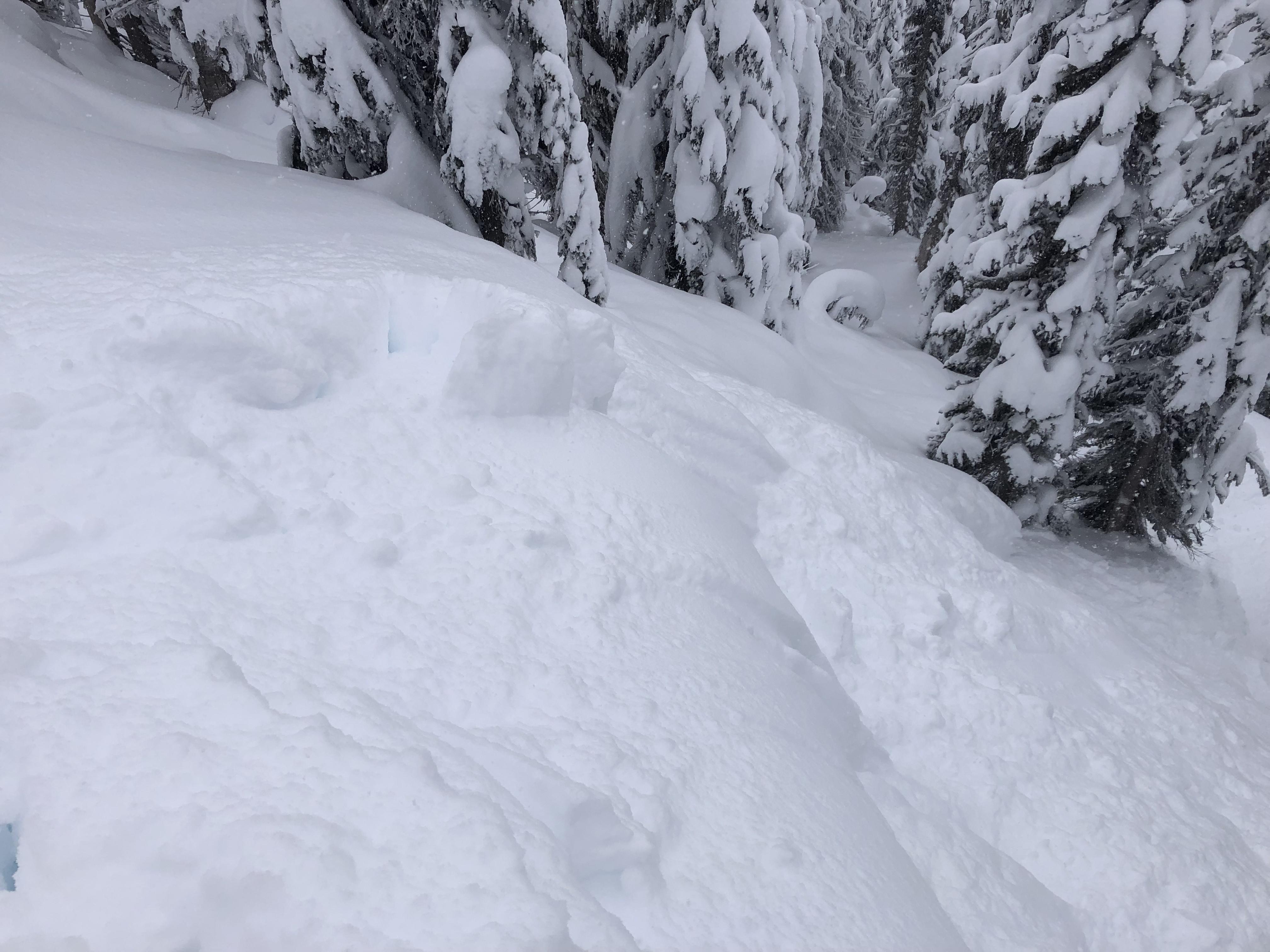We had excellent skiing over the past four days at Rogers Pass.
Day 1: Sapphire Col with a boot pack up Castor for good measure. After following an existing skin track to the top of the triangle moraine, we swapped breaking trail with another party with ~25 cm ski pen in blower storm snow (no wind effect). After a few quick hand shears showing a good bond with the storm snow and some probing confirming a snowpack with progressively increasing resistance on the glacier, we decided to tackle the crux roll that leads to the upper Asulkan glacier. We were roped up for the whole ascent of the glacier, probing between 200-240 cm. The boot pack up and back down Castor was extra facetty. Amazing ski quality all the way back down our ascent line to valley bottom.
Day 2: McGill/ Bostock. A sunny start to the day, with a bullet-proof uptrack to ~1500 m. Ski crampons would have been nice, hopefully it’s on the mend with the new snow. Found the early/mid Jan SH down 35 cm near the top of the Gunbarrels, without much for slab properties above (that will change). We tried to pick a conservative line down from ridgetop skiing one-at-a-time before entering the Gunbarrels properly. Same ski quality as the day before, but a few more tracks to avoid. We spent the rest of the day skiing low angle glades, enjoying the simplicity of avoiding avalanche terrain (mostly). As the cold front moved in and the south aspects lost the sun, a sun crust formed. Exit was fast and firm!
Day 3: Lily-Dome traverse. Another few cms of new snow. The Lily is in rough shape with lots of open crevasses and highly variable snow depth around the toe and crux roll. Similar snowpack observations as the previous days (no significant combination of shears/ slab, no wind effect) as we ascended the glacier. Rope was on, with average snow depths over 200 cm but as little as 130 cm in isolated areas. There was buried wind slab under the most recent storm snow on the immediate lee (Asulkan) side of the Dome col. Three days previous a party had ski cut a Sz 1 windslab right below the Dome col descending onto the cleaver. We opted to avoid the Dome Roll and instead skied the more conservative uptrack line. From the cleaver down the ski quality was amazing. We skied features as steep as 35 degrees but made sure we were skiing one at a time and tried to pick the least consequential lines.
Day 4: Avalanche Crest. Another 5-10 cms of new snow, and again no wind affect. Found resistant planar shears under the 35cms of recent storm snow, but almost no slab properties above. Hard breaks on the rounding facet interface down 130 cm and 1 finger resistance indicate that this layer is slowly becoming less problematic in some deeper/ consistent snowpack areas (however still problematic in other terrain!). Total height of snow was 185 cm at 2150 m. There’s a buried sun crust on south aspects, but not on the west-facing terrain. The sloughing was substantial, and we were only able to kick off very small soft slabs on unsupported pillow features. With good group management in mind, we found great skiing down to the bench. A combination of melt-freeze crust under the storm snow and more concentrated tracks detracted from the ski quality below the bench (~1600 m and down).
While we didn’t witness any avalanche activity, there is evidence of recent natural windslab releases, and even some deeper slabs in extreme terrain (N. face of Bonney). There are still reports of skier triggered avalanches almost every day. The skiing is all-time right now, and in sheltered areas we can expect more of the same this week. Forecasted wind and warming temps will promote slab formation. Have fun and think about consequence when you are choosing your terrain!

